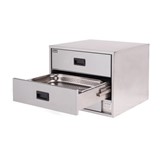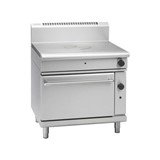When it comes to commercial kitchens, having the right equipment can significantly impact the efficiency and quality of your culinary endeavors. One such indispensable piece of equipment is the commercial convection oven.
These marvels of modern technology are designed to enhance baking and cooking processes by utilizing a unique airflow system that ensures even heat distribution, resulting in faster cooking times and consistent results.
In this comprehensive buying guide, we will delve into the world of commercial convection ovens, exploring their functionality, size and capacity considerations, energy efficiency, and various specialized features, as well as tips for comparing brands and models, and smart budget planning options.
Whether you're an experienced chef or a budding entrepreneur in the food industry, this guide will equip you with the knowledge to make an informed decision and select the perfect commercial convection oven that meets your specific needs.
-
Understanding the Functionality of Convection Ovens
Convection ovens utilize an interior fan system to circulate hot air throughout the oven cavity during the cooking process. This sets them apart from standard static ovens that rely solely on radiant heat coming from the bottom or top of the oven to cook food. The forced air circulation provides a number of advantages compared to static heat:
- Faster cooking times: The constant movement of hot air speeds up cooking by bringing a continuous supply of hot air into contact with the food. Meals cook approximately 25-30% faster in a convection oven compared to a conventional oven. This improves cooking efficiency and throughput.
- Even heating: The fans and exhaust vents ensure the hot air circulates evenly around all sections of the oven rather than just rising from the bottom. There are no hot or cold spots. Food cooks uniformly no matter where pans are placed in the oven.
- Increased browning and crisping: The accelerated hot air movement has a drying effect on food surfaces, enhancing the Maillard reaction responsible for desirable exterior browning and crispy textures. Convection ovens excel at roasting meats, baking crispy pastries and pizza.
- Sealing in juices: The quick cooking times sear protein surfaces, sealing in natural juices and flavors. This keeps prepared foods juicier. The reduced cooking time also minimizes moisture loss.
- Preheating speed: Convection fans quickly preheat an oven in a fraction of the time needed for a standard oven. This provides faster transition from idle to cooking loads.
- Climate control: Some convection ovens allow adjusting the humidity level to create an optimal microclimate for certain foods like bread. Added steam enhances rising and crust formation.
Understanding the science behind how convection ovens use targeted air circulation allows appreciating the performance benefits they deliver for commercial kitchens. Their speed, efficiency, and cooking customization abilities make convection ovens a game changing advancement for any high-volume foodservice operation.
-
Size and Capacity Considerations
Convection ovens are produced in a range of sizes and capacities to meet the diverse needs of commercial kitchens. Determining the right oven size and capacity for your operation requires analyzing your current and projected production volumes, peak period demand, menu diversity, and available space.
Full-size convection ovens are the largest units available. They typically have double-compartment designs that allow configuring separate temperature zones for greater cooking flexibility. Full-size gas convection ovens generally accommodate between 8 and 40 sheet pans, while full-size electric models commonly fit 6 to 32 pans. The largest capacity models allow cooking enough food for banquets or cafeteria service. However, they do require considerable installation space.
For smaller footprint needs, countertop convection ovens are available. These are designed for placement on a counter or sturdy shelf. Countertop convection ovens hold less pans than full-size, usually between 1 and 8 pans depending on the model. They are ideal for operations with limited space.
Combination ovens with steam or microwave functions will have slightly lower convection oven capacity since they incorporate multiple cooking modes in one cavity. Still, they provide added versatility.
Choosing the right oven size involves balancing production needs with space constraints and budget. Allow room for future growth rather than undersizing. An oversized oven wastes energy when run partially full. Consider both current and future capacity requirements when selecting your convection oven size.
-
Energy Efficiency and Cost Savings
Commercial convection ovens represent a major energy expense, often consuming more power than any other kitchen appliance. An oven running up to 16 hours per day year-round can cost thousands in annual energy bills. Therefore, selecting an energy efficient convection oven model provides substantial cost savings benefits.
Look for convection ovens certified by organizations like ENERGY STAR® or the American Gas Association. These independent certifications indicate models proven to meet rigorous energy efficiency standards. Certified ovens incorporate features like automated on/off modes, variable speed fans, tighter door seals, and enhanced insulation to reduce heat loss. This allows them to perform cooking tasks using significantly less energy compared to standard models. Over the 10-15 year lifespan of a quality oven, an energy efficient model can save over $10,000 in utility expenses.
In addition to saving on energy costs, efficient convection ovens generate less ambient heat in the kitchen environment. This reduces air conditioning demands and improves working comfort for staff. Models recognized by sustainability organizations demonstrate a manufacturer's commitment to designing for optimal energy conservation.
Both gas and electric convection ovens now offer high-efficiency models. For electric ovens, look for ones earning the ENERGY STAR® Most Efficient designation, meeting over 10% better energy standards compared to baseline ENERGY STAR® certification. For gas ovens, those certified by the American Gas Association offer the best efficiency.
While energy-efficient models carry modestly higher upfront cost, the long-term energy savings rapidly offset the difference. Over the lifespan of the equipment, they demonstrate better value by providing consistently lower energy bills year after year. This frees up money to invest in other parts of the business. For any high-volume commercial oven, energy efficient design is a smart investment.
-
Types of Convection Ovens: Gas vs. Electric
Convection ovens are designed to operate using either gas or electric fuel sources, each offering distinct advantages. Evaluating the differences between gas and electric models allows identifying the better match for your cooking needs and facility constraints.
- Gas convection ovens utilize natural gas or propane for fuel. The heat is generated by burning the gas, which heats interior air then circulated by the convection fan system. Gas ovens provide extremely high heat output up to 500-600°F for applications like pizza or baking. Their open flame burners allow accurately adjusting temperature at the instant it is needed. Gas ovens heat up remarkably fast, often in under 10 minutes. This rapid preheating enables quick transition from idle to active cooking. Gas fuel also costs significantly less than electricity in most commercial markets. However, gas ovens do add more residual ambient heat to kitchen environments. They require proper ventilation and gas line installation. Gas convection ovens are ideal for operations with heavy usage requirements.
- Electric convection ovens use heating elements powered by electricity to generate their heat. While electric models may cost slightly more to operate long-term, they provide precise uniform heat with minimal temperature fluctuations. Their closed heating elements contain no open flames. Electric ovens require minimal venting and emit no on-site emissions, making them more suitable for enclosed kitchens. Their convection fans circulate heat gently with less drying effect on foods. Electric ovens are also simpler to use, maintain, and clean without any gas lines or combustion byproducts. Although they don't reach the extreme high temperatures of gas models, electric convection ovens still offer excellent performance for most kitchen needs. Their usability and convenience balance the higher operational costs.
For maximum flexibility, combination ovens allow switching seamlessly between gas and electric convection modes in the same unit. This enables matching the ideal heat source to the food and application. Considering the strengths of both gas and electric models allows determining the better fuel source for one's commercial convection oven based on cooking needs and facility capabilities.
-
Specialized Features for Different Applications
While all convection ovens circulate hot air for fast, even cooking, specialized models now incorporate additional features to optimize results for specific foodservice applications. Understanding these specialty convection ovens enables matching the right equipment capabilities to your menu and cooking needs.
- High-volume convection ovens feature oversized cavities and high-power heating to accommodate very large loads. They allow institutions like hospitals, schools, or cafeterias to cook huge batches of food quickly. Programmable menus simplify preparing different dishes that need to be cooked at different times.
- Bakery convection ovens offer injected steam, humidity control, and airflow modes tailored for perfect baking. Steam enables superb rising, texture, and crust formation on breads and pastries. Digital precision manages moisture levels throughout baking cycles.
- Combination ovens add microwave and steam injection to the convection cooking mode. This provides unprecedented versatility to rapidly prepare foods using the ideal heating method.
- Smoking convection ovens impart natural hardwood smoke flavor into meats, vegetables, and other foods during the cooking process. The integrated smoke box eliminates the need for external smoking equipment.
- Retherm ovens gently warm prepared foods to safe serving temperatures for banquet events. Low-speed fans maintain temperature without drying or overcooking the food.
From bakeries to pizzerias to catering operations, specialty convection ovens now exist with features tailored for virtually any commercial cooking application. This allows choosing just the right convection oven optimized for your establishment's specific needs.
-
Comparing Brands and Models
The market for commercial convection ovens is vast, and choosing the right brand and model can be overwhelming. To make an informed decision, consider factors such as reputation, reliability, and customer reviews. Reputable brands with a history of producing top-notch kitchen equipment are often a safe bet. Reading customer feedback can provide valuable insights into real-world performance and durability.
Additionally, compare the warranties offered by different manufacturers. A more extended warranty period can be an indicator of a brand's confidence in its product's quality. Take the time to research each model's specifications and features, weighing the pros and cons to find the one that best aligns with your needs and preferences.
-
Budget Planning and Financing Options
As with any significant investment, budget planning is a crucial step in acquiring a commercial convection oven. Set a realistic budget range based on your specific requirements and the features you prioritize. Remember to account for any additional costs, such as installation, ventilation, and accessories.
If your budget falls short, explore financing options available through reputable vendors or consider leasing arrangements. These alternatives can provide the opportunity to acquire a premium convection oven while spreading the costs over time, thus easing the financial strain on your business.
Conclusion
A commercial convection oven can revolutionize your kitchen operations, elevating the quality of your culinary creations while saving valuable time and energy. Understanding the functionality of these ovens, considering size and capacity, and evaluating energy efficiency are fundamental steps in the selection process. Deciding between gas and electric models depends on your specific needs and existing infrastructure. Don't overlook the importance of specialized features that cater to your cooking applications.
Comparing brands and models allows you to make an informed decision, ensuring you invest in a reliable and high-performing unit. Lastly, comprehensive budget planning and exploring financing options will enable you to acquire the ideal commercial convection oven without straining your finances.
Remember, this appliance will be the heart of your kitchen, contributing to the success of your culinary endeavors. So, take your time, weigh your options, and make a choice that aligns perfectly with your aspirations and business goals. With the right commercial convection oven by your side, your culinary creations are bound to reach new heights of excellence.

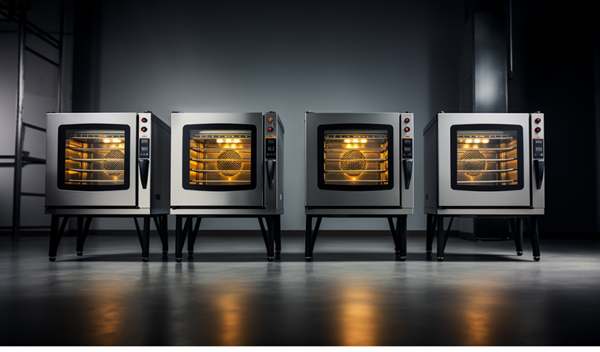



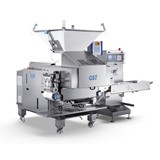

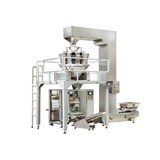



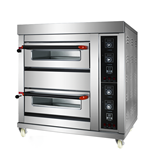




-160x160-state_article-rel-cat.png)




